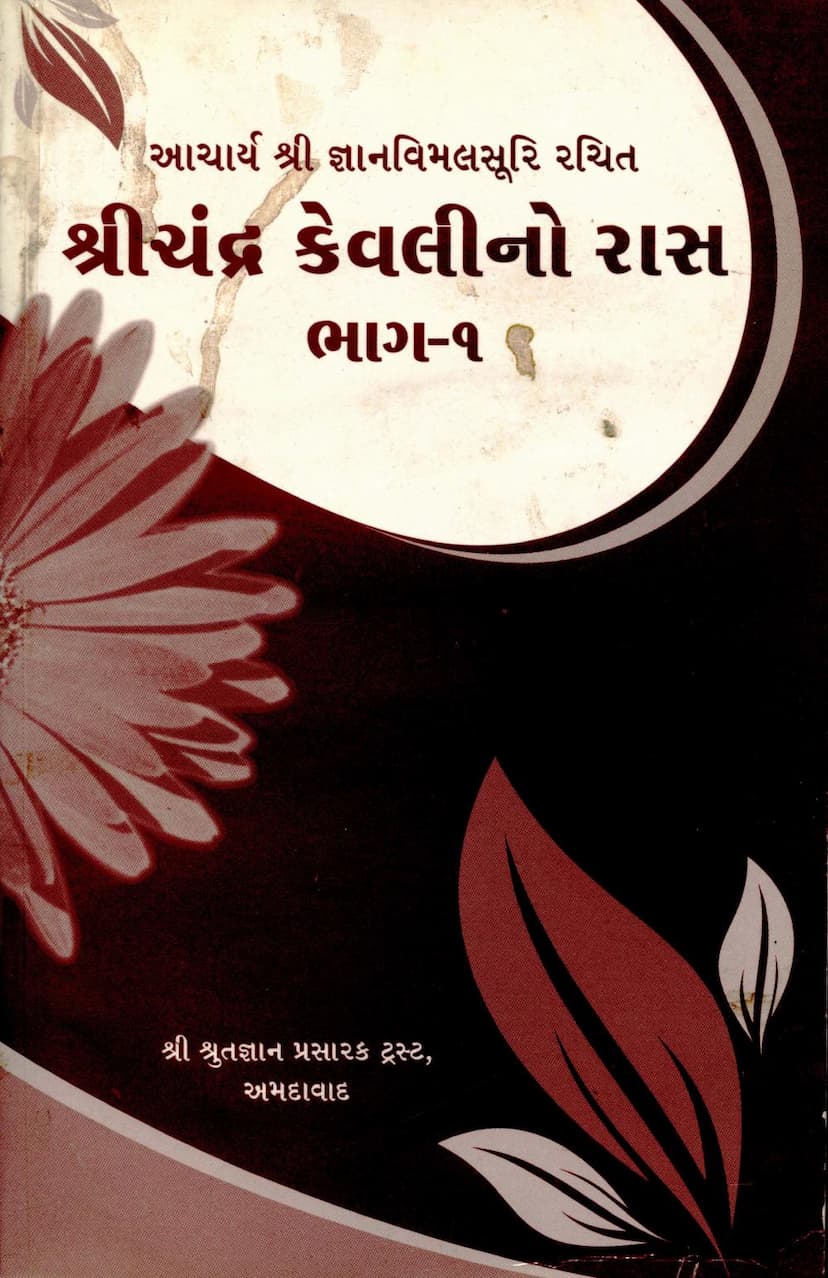Shreechandra Kevalino Ras Part 01
Added to library: September 2, 2025

Summary
This is a comprehensive summary of the provided Jain text, "Shreechandra Kevalino Ras Part 01," authored by Gyanvimalsuri and published by Shrutgyan Prasarak Trust. The text is presented in Gujarati and describes the life and teachings of Shreechandra Kevalino. The summary is based on the content of the provided pages, focusing on the key narratives, characters, and themes.
Overall Context:
The provided text is the first part of a larger work, "Shreechandra Kevalino Ras." The publisher is Shree Shrutgyan Prasarak Trust, Ahmedabad, with the first edition published in Vikram Samvat 2066 (2000 AD). The book is divided into multiple parts, and this volume is the first of two parts due to its length. The publication aims to make this Jain scripture accessible to a wider audience. The text highlights the exemplary life of Shreechandra Kevalino, emphasizing the importance of virtue, devotion, and asceticism in achieving spiritual liberation.
Key Figures and Narratives:
- Acharya Shree Gyanvimal Suri: The author of the Ras, praised for his humility and devotion to virtues.
- Shreechandra Kevali (also referred to as Shreechandra Kumara/Raja): The central figure of the Ras, whose life story is narrated. His journey is depicted as a path of spiritual growth, marked by prosperity, virtuous conduct, and ultimate liberation.
- Shrāvak Bhimsinh Manek: His preface emphasizes the continuous increase in Shreechandra's worldly possessions, spiritual devotion, and knowledge. He highlights the role of past life virtues, particularly the "Aayambil Vardhman Tap," in his present life's success.
- King Pratapsingh: A ruler in whose kingdom, according to the narrative, Shreechandra's story unfolds. His justice and righteousness are mentioned.
- Chandra-vati: The daughter of King Pratapsingh, whose beauty and virtue are described.
- Shreechandra Kevali's Journey: The Ras details various stages of Shreechandra's life, including his birth, upbringing, worldly experiences, spiritual practices, and eventual attainment of Keval Jnan (omniscience) and Moksha (liberation).
- Tapasya (Asceticism): The text repeatedly emphasizes the power of severe austerities, such as "Aayambil Vardhman Tap," in overcoming past karma and achieving spiritual goals.
- Moral and Ethical Teachings: The narrative is interspersed with moral lessons, stressing the importance of righteousness, compassion, self-control, and devotion to Jain principles.
Themes and Content Highlighted:
- Past Karma and Present Destiny: The Ras underscores the Jain concept of karma, explaining how actions in past lives influence present circumstances and spiritual progress.
- The Significance of Tapasya: The text illustrates how ascetic practices, even seemingly difficult ones, are instrumental in achieving spiritual merit and liberation.
- The Path to Keval Jnan and Moksha: Shreechandra's life is presented as an example of how one can attain Keval Jnan and ultimately Moksha through virtuous living, devotion, and rigorous spiritual practices.
- Narrative Style: The Ras is written in a poetic and engaging narrative style, using various meters and verses (Doha, Chaupai, etc.) to convey the story and teachings. It includes descriptions of cities, palaces, kings, and celestial beings, painting a vivid picture of the spiritual and material world.
- Structure of the Ras: The narrative appears to be divided into "Dhal" (chapters or sections), each focusing on specific events or aspects of Shreechandra's life. The first part covers numerous episodes, starting from his birth and moving through various stages of his life and the teachings he imparts.
Specific Narratives from the Translated Sections (Pages 10-48):
The initial pages focus on the introduction, publisher's notes, and preface, setting the context for the Ras. The main narrative begins with a description of a city named Vishalā, ruled by King Chetak. It then introduces Gautam Swami, a disciple of Lord Mahavir, and his teachings. The core story of Shreechandra's past life practices, particularly the "Aayambil Vardhman Tap" and its results in his current life as a king, is a recurring theme.
The text then delves into the description of Shreechandra's birth, his opulent life, his interactions with various individuals, and his spiritual inclination. It details his encounters with different people, the teachings he receives and imparts, and the events that lead him towards renunciation and spiritual enlightenment. The narrative also touches upon philosophical concepts, ethical conduct, and the importance of devotion in Jainism.
The provided translation of the first part of the Ras (up to page 48) covers:
- Introduction and Praises: Offering respects to deities, gurus, and the Jain faith.
- The Virtue of Tapasya: Highlighting the "Aayambil Vardhman Tap" and its profound benefits, referencing its mention in scriptures and its impact on Shreechandra's life.
- The Description of the City and Kingdom: Detailing the grandeur of the city where Shreechandra lived.
- The King's Virtues: Praising King Pratapsingh for his just rule and Shreechandra's early life.
- Encounters and Teachings: Shreechandra's interactions with various individuals, including merchants, ascetics, and spiritual teachers, and the wisdom gained from these interactions.
- The Role of Parents and Family: Mentioning his mother's service and the support he received.
- Introduction of Key Concepts: Discussing the four types of Dharma (Charity, Morality, Asceticism, and Devotion) and the importance of devotion.
- The Role of Saints and Teachers: Emphasizing the guidance received from spiritual masters.
- The Importance of Knowledge and Ethics: Showcasing Shreechandra's intellectual prowess and virtuous character.
Overall Purpose:
The "Shreechandra Kevalino Ras Part 01" serves as a spiritual guide and inspirational biography for Jain followers. It aims to disseminate the teachings of Jainism by illustrating the life of a virtuous soul who achieved great spiritual heights through dedication, righteousness, and adherence to religious principles. The text is a valuable resource for understanding Jain philosophy, ethics, and the path to liberation.